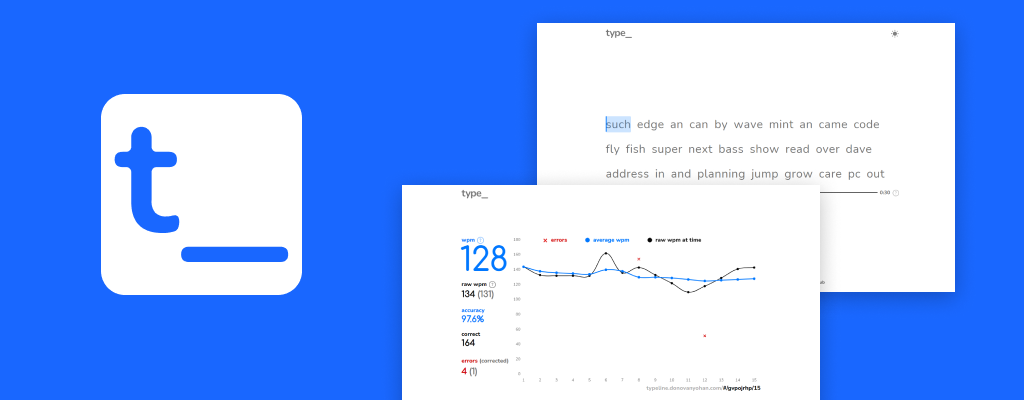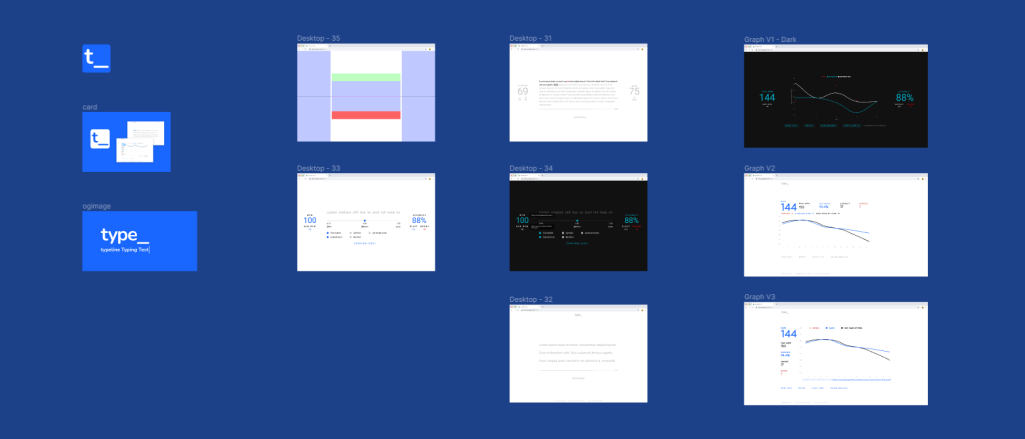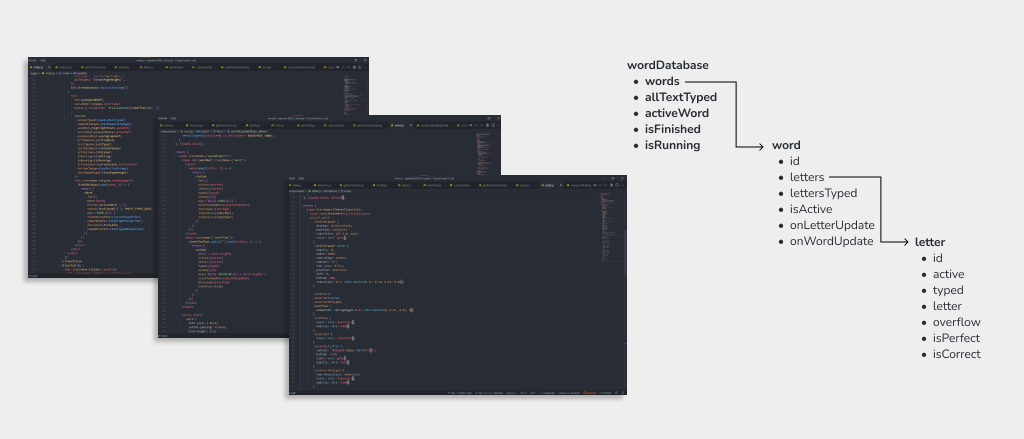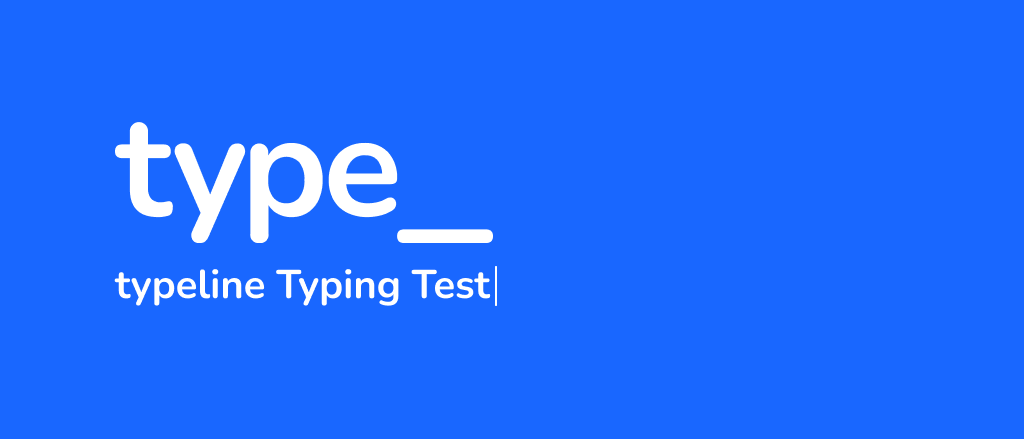
typeline
I really like typing and I've used a lot of different typing practice tools and tests and found myself going back to specific ones for certain things they did, but why didn't one test have all of those certain things? This project was all about making the typing experience as enjoyable and rewarding as possible, and using visual feedback to encourage consistency and flow.
- Full Stack
- Side Project
- September 2021 - Present
- typeline.donovanyohan.com
- View on GitHub
Typeline was a great application of interaction design, gamification, motion design, and working with a highly dynamic React front-end.

Improving on a long-standing status-quo
There are a lot of typing tests, educational typing tools, and other online resources that already exist, and even some really creative typing games. However, I found myself bouncing between different ones for different things they excelled at, whether it was just easiest to get started typing, nicest looking, most customization, or ease of sharing with others. This led to me to wonder, can I get everything I enjoy about these in one place? A big part of what makes typing enjoyable to me and other typists I spoke with is the 'flow state' that they're able to enter, typing at their fastest speed consistently and accurately. Interestingly enough, despite this being my own and other skilled typists' favourite feeling from typing, very few if any of the tools we used inherently encouraged getting into this state.
Encourage consistency and flow by design
The main guiding design principles for typeline are all about trying to encourage flow. This in addition to focusing on all the good that came from typing tests before laid the groundwork for my focus on using motion design to give instant feedback based on the user's performance, and visually reward the desired behaviour. I went on to study animation patterns from arcade games to see how they would positively reinforce player success through score increases and other visual feedback.
Outcomes
- Design principles to validate design decisions
- Emphasis on motion design
- Brought in further ideas of gamification

Building a typing engine with React
Partly as a challenge to myself and partly because nothing available fit my needs, the engine powering typeline is entirely custom built. Having identified the most important parts of typeline's experience in the design phase, now I could more logistically identify all the specific pieces I needed in order to achieve the more generic user goals. Armed with just enough of a UI wireframe and my own architecture blueprint, I was able to quickly validate interactions by developing the essential building blocks and using them to prototype and test interactions and designs.
Develop for the design, and design to develop
I scaffolded out a component structure and compared it against my user stories and design principles to make sure I had all the technical pieces covered. This allowed me to develop an MVP with room to scale for future additional features. It also let me think of new ways to approach solving my original problems after having all the data explicitly mapped out. One example of this was being able to identify the number of corrections and give feedback that encourages users not to just leave errors unchecked, a calculation required for one of my user goals but not usually shown in other typing tests.
Outcomes
- Robust reusable and scalable component library
- Quick validation of design in production
- Further UX improvement opportunities from testing in development

Gamification and next steps
Typeline is a very ambitious project, and what is currently available is just a part of what I am hoping typeline can become. Currently the groundwork is laid for more gamification and sharing features with friends, through the seeded rng that allows users to share the exact test they took with friends to compare results. The next steps for this are to make that information more readily available, creating leaderboards for specific tests, and ultimately a way for users to race against each other in real-time.
Practice makes perfect, but it can also be fun
By borrowing the elements and techniques of arcade games that encourage competition and replayability like leaderboards, positive reinforcement through visual feedback, and simple rules, typeline aims to achieve all the same of typing tests before it, but reach a wider audience that can enjoy it as a game.
Outcomes
- Roadmap for future updates
- A typing test mixed with a game
- Natural building of engagement through competition